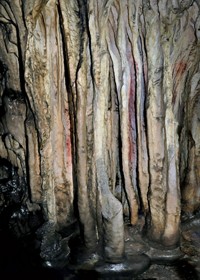Advertisement
Grab your lab coat. Let's get started
Welcome!
Welcome!
Create an account below to get 6 C&EN articles per month, receive newsletters and more - all free.
It seems this is your first time logging in online. Please enter the following information to continue.
As an ACS member you automatically get access to this site. All we need is few more details to create your reading experience.
Not you? Sign in with a different account.
Not you? Sign in with a different account.
ERROR 1
ERROR 1
ERROR 2
ERROR 2
ERROR 2
ERROR 2
ERROR 2
Password and Confirm password must match.
If you have an ACS member number, please enter it here so we can link this account to your membership. (optional)
ERROR 2
ACS values your privacy. By submitting your information, you are gaining access to C&EN and subscribing to our weekly newsletter. We use the information you provide to make your reading experience better, and we will never sell your data to third party members.
Art & Artifacts
Spectroscopy reveals crossed-out passages in Marie Antoinette’s love letters
The revealed passages provide evidence for a passionate secret relationship between two political figures
by Emily Harwitz
October 4, 2021

Entire passages have been crossed out from letters exchanged between famed French queen Marie Antoinette and the Swedish count Axel von Fersen, her rumored lover, during the height of the French Revolution. Someone clearly did not want those passages to be seen. Now, a team of researchers has found them out, uncovering both the redacted contents and the probable identity of the censor (Sci. Adv. 2021, DOI: 10.1126/sciadv.abg4266).
A team of researchers, led by Anne Michelin from the Research Center for Conservation in Paris, tested whether common forensic techniques could differentiate between the inks used to write the passages and those used to cross them out. The composition of the two inks is very similar, which made the project challenging. After exploring analytical techniques, Michelin’s group found they could use the consistent copper-to-iron ratio between the inks in some of the original letters to uncover crossed-out words between the putative lovers.
Using x-ray fluorescence spectroscopy and a suite of data processing tools, they deciphered the redacted text, which included words like “beloved,” “adore,” and “madly.” Historians had hypothesized that the Count’s great-nephew censored the letters to protect the von Fersen family’s reputation. But after analyzing the overlying redaction inks and comparing their composition to the inks that the Count used to write the letters, the researchers found that the inks were nearly identical and are now confident that it was the Count himself who censored the letters. Michelin, reached over email, says that result surprised her: “We didn’t think we would have such strong evidence.”
UPDATE
This story was updated on Oct. 6, 2021, to add a reference to the journal article it covers.





Join the conversation
Contact the reporter
Submit a Letter to the Editor for publication
Engage with us on Twitter